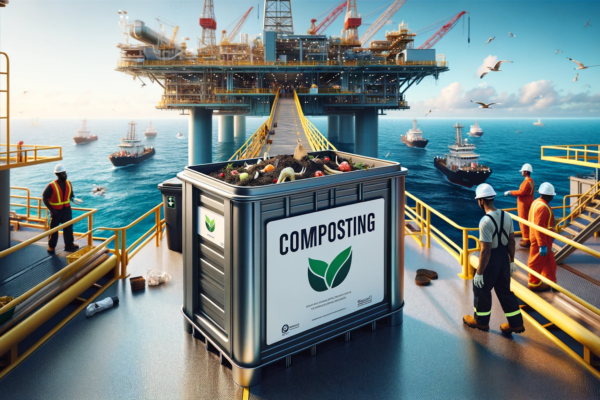Slash Your Waste Bills & Go Green: The Smart Business Shift to On-Site Composting!
Slash Your Waste Bills & Go Green: The Smart Business Shift to On-Site Composting!
Welcome, savvy business leaders and sustainability champions! Today, we embark on an exploration of a transformative approach that’s not merely about being stewards of the Earth but also about being astute stewards of your company’s finances. That’s right, we’re spotlighting the remarkable benefits of on-site composting.
The Rising Costs of Waste Management
When we delve into the economics and logistics of waste management, the urgency of the situation becomes clear. It’s not just about the financial burden of escalating disposal fees (3-5% annual increase); we’re also facing a critical spatial dilemma—landfills are running out of space. In many urban areas, the reality is stark; we are quickly exhausting available landfill capacity. The Environmental Research & Education Foundation highlights that certain regions in the United States could reach their landfill capacity within the next decade. This shortage of space is driving up the costs associated with waste disposal and underscoring the need for sustainable alternatives like on-site composting.
This challenge amplifies the financial and ecological strain of traditional waste disposal methods. As landfills near capacity, the environmental impact becomes more severe, with increased methane emissions from the decomposing organic waste contributing significantly to climate change. This scenario underscores the pressing need for businesses to reconsider their waste management strategies, turning to solutions that not only mitigate their environmental footprint but also offer a safeguard against the rising costs and logistical challenges of conventional disposal methods.
Understanding On-Site Composting
What exactly is on-site composting? It’s the practice of converting your business’s organic waste into a nutrient-rich soil enhancer, right on your premises. This method not only diminishes your waste output but also transforms your discarded organics into a valuable resource. Whether you’re operating a quaint café or a large hotel, there’s an array of composting systems available to suit your specific needs and constraints.
The Financial Logic Behind the Shift
The economic advantages of on-site composting are significant. By decreasing the volume of waste requiring professional disposal, businesses can enjoy substantial savings. Areas with steep landfill fees stand to benefit immensely, with the potential for annual savings reaching into the thousands. Areas like the Pacific Northeast, Hawaiian Islands, and the Northeast experience significantly higher tipping fees than the rest of the country. Moreover, the initial investment in composting equipment often pays for itself within a few years, thanks to these cost reductions.
Enhancing these financial benefits is the savings garnered from producing your own compost, eliminating the need to purchase soil amendments for landscaping. This aspect of on-site composting not only contributes to your ROI but also aligns with sustainable resource management practices.
Environmental Benefits That Align with Business Goals
Embracing sustainability through on-site composting resonates well with consumers, increasingly favoring businesses with green credentials. Reducing your waste footprint not only lowers operational costs but also elevates your brand in the eyes of eco-conscious customers.
Furthermore, the regulatory landscape around waste management is tightening. By adopting on-site composting, your business not only meets current regulations but is also well-positioned to adapt to future environmental standards, securing a competitive edge.
Practical Steps to Implement On-Site Composting
Beginning your composting journey starts with a comprehensive waste audit to gauge the amount and types of organic waste your business produces. This assessment is crucial in selecting the most appropriate composting system for your needs, considering factors such as space availability, waste volume, and desired compost output.
Engagement across your organization is essential for successful implementation. Cultivating a culture that embraces sustainability practices involves clear communication, establishing guidelines, and possibly appointing a composting coordinator to champion the initiative.
Overcoming Common Challenges
While the upfront costs and logistical considerations of on-site composting may seem daunting, solutions exist for businesses of all sizes. Modular systems can accommodate tight spaces, and grants or tax incentives for sustainability projects can alleviate financial burdens. The key hurdle is often taking the first step, but the tangible benefits quickly become apparent, validating the decision to embrace composting.
Case Study
Check out this Case Study at the Poudre School District in Fort Collins, Colorado. Here, this innovative school district has deployed two BioSpeed Compost Machines at their schools. Not only do the students love the program, but the school experiences all the financial and environmental advantages of cutting ties with traditional waste management.
Conclusion
On-site composting stands out as a pragmatic solution for businesses aiming to slash waste management expenses while boosting their environmental stewardship. With a range of systems available to suit various operational scales and the growing consumer demand for sustainable practices, now is an opportune time to transition to on-site composting.
What’s holding you back? The journey to sustainability and cost savings through on-site composting is within reach, ready for you to embark.


